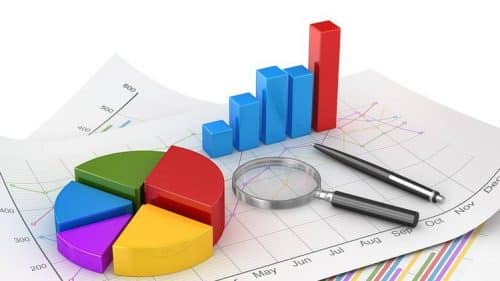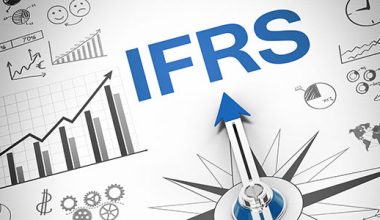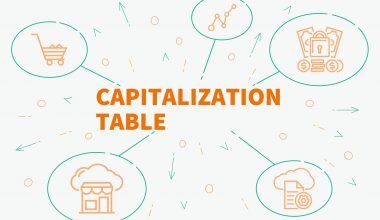Financial models are actions that involve the creation of a model that represents a real-world financial scenario. They are meant to be used as decision-making aids. Financial models may be used by company leaders to assess the expenses and anticipate the returns of a proposed new project. Financial analysts use financial models to forecast the impact of a change in economic policy or any other event on the value of a company’s stock. Learn how to build a financial model whether you are a beginner or an advanced modeler.
What is a Financial Model?
A financial model is essentially a tool incorporated into spreadsheet software such as Microsoft Excel that forecasts a company’s financial performance in the future. The prediction is often based on the company’s previous performance and future expectations, and it necessitates the preparation of an income statement, balance sheet, cash flow statement, and supporting schedules (known as a 3 statement model). More advanced models, such as discounted cash flow analysis (DCF model), leveraged buyout (LBO), mergers and acquisitions (M&A), and sensitivity analysis, can be created from there.
What is the purpose of a Financial Model?
A financial model’s output is utilized for decision-making and financial analysis, both within and outside of the organization. Executives within a corporation will use financial models to make choices about:
- Capital raising (debt and/or equity)
- Making acquisitions (of companies and/or assets)
- Organically expanding the business (e.g., opening new stores, entering new markets, etc.)
- Assets and business units may be sold or divested.
- Budgeting and projections (planning for the years ahead)
- Allocation of capital (priority of which projects to invest in)
- Putting a monetary value on a company
- Analysis of financial statements/ratio analysis
- Accounting for management
How can you learn to Build a Financial Model?
Practice is the greatest approach to learn financial modeling. To become an expert at building a financial model, you must gain years of experience and learn by doing. Reading equity study studies might help you practice by providing something to compare your results against. One of the greatest methods to practice is to use a mature company’s past financials to build a flat-line financial model into the future and compute the net present value per share. This should be in close comparison to the current share price or the projected values of equities research reports.
What are the Best Practices in Building Financial model?
#1. Excel hints and tips
When building a financial model in Excel, it is critical to adhere to best practices. For further information, you can take free Excel classes that cover the following major topics:
- Reduce or eliminate your use of your mouse (keyboard shortcuts are much faster)
- For hard codes and inputs, use a blue font (formulas can stay black)
- Keep formulas simple and difficult calculations broken down into steps.
- Make certain you understand how to apply the most fundamental Excel formulae and functions.
- To query data, use INDEX and MATCH instead of VLOOKUP.
- To build scenarios, use the CHOOSE function.
#2. Presentation Formatting
It is critical to distinguish between inputs (assumptions) and outputs in a financial model (calculations). Typically, you can do this using formatting rules such as rendering inputs blue and formulas black. Other conventions, such as shading cells or using borders, can also be used.
#3. Design and arrangement of the model
It is vital to building a financial model in a logical and easy-to-follow format. Typically, this entails building the entire financial model on a single worksheet and utilizing grouping to generate distinct portions. This allows you to simply expand or contract the model and move about it.
The following are the main sections to include in a financial model (from top to bottom):
- Drivers and assumptions
- Profit and loss statement
- The balance sheet
- Statement of cash flows
- Schedules that help
- Valuation
- Analysis of Sensitivity
- Graphs and charts
How do you Build a Financial Model? (10-Step Instructions)
Iterative financial modeling is a procedure. You have to work on different portions before you can finally tie it all together.
Here’s a step-by-step overview of where to begin and how to eventually connect all the dots when you want to build a financial model.
#1. Previous results and assumptions
Every financial model begins with a company’s historical performance. You begin building the financial model by downloading three years of financial statements and entering them into Excel. Then, for the historical period, you reverse engineer the assumptions by calculating things like revenue growth rate, gross margins, variable expenses, fixed costs, AP days, inventory days, and AP days, to mention a few. From there, you may enter the forecast period’s assumptions as hard codes.
#2. Begin with the income statement.
With the forecast assumptions in place, you can compute the top of the income statement, which includes revenue, COGS, gross profit, and operating expenditures, all the way down to EBITDA. Depreciation, amortization, interest, and taxes will have to be calculated later.
#3. Begin the balance sheet.
After you’ve completed the top of the revenue statement, you may begin filling out the balance sheet. Begin by calculating accounts receivable and inventory, both of which are functions of revenue and COGS, as well as the AR and inventory days assumptions. Fill in accounts payable, which is based on COGS and AP days.
#4. Build the necessary schedules.
You must first prepare a schedule for capital assets such as Property, Plant, and Equipment (PP&E), as well as debt and interest, before completing the income statement and balance sheet. The PP&E schedule will take data from the previous period and add capital expenditures while subtracting depreciation. The debt schedule will also use historical data to add debt increases and deduct repayments. You can calculate the interest rate using the average debt balance.
#5. Finish the income statement and the balance sheet.
You can complete the income statement and balance sheet by the information from the accompanying schedules. Link depreciation to the PP&E schedule and interest to the debt schedule on the income statement. You can then compute profits before taxes, taxes, and net income. Connect the closing PP&E balance and closing debt balance from the schedules to the balance sheet. Dividends or shares repurchased can be subtracted from shareholder equity by carrying forward last year’s ending amount, adding net income and capital raised, and removing dividends or shares repurchased.
#6. Build a cash flow statement.
After you’ve completed the income statement and balance sheet, you can use the reconciliation procedure to build the cash flow statement. Begin with net income, then deduct depreciation and adjust for changes in non-cash working capital to get at cash from operations. Cash used for investing is a function of capital expenditures in the PP&E schedule, while cash used for financing is a result of the assumptions made for debt and equity raising.
#7. Conduct the DCF analysis.
When you complete the three-statement model, it is time to compute free cash flow and execute the business valuation. The business’s free cash flow is discounted back to today at the firm’s cost of capital (its opportunity cost or required rate of return).
#8. Include possibilities and sensitivity analysis.
When the DCF analysis and valuation parts are finished, it is time to add sensitivity analysis and scenarios to the model. The goal of this analysis is to assess how much changes in underlying assumptions will affect the company’s value (or some other statistic). This is extremely useful for estimating the risk of an investment or for business planning (e.g., does the company need to seek money if sales volume falls by x percent?).
#9. Build graphs and charts.
Clear communication of results is what distinguishes excellent financial analysts from merely competent ones. Charts and graphs are the most effective approach to display the outcomes of a financial model. Most executives do not have the time or patience to investigate the model’s inner workings, thus charts are far more effective.
#10. Model stress testing and auditing
Your labor does not end after the model is completed. Following that, it’s time to begin stress-testing extreme scenarios to see if the model responds as intended. It is also critical to use the auditing tools to ensure that it is accurate and that all of the Excel formulas are working properly.
Techniques for Advanced Financial Model (AFM)
There are several major strategies used by world-class financial analysts in advanced financial model (AFM). This guide explains the best and most advanced methodologies that financial modelers should think about adopting to perform industry-leading financial model.
We will go through some of the most essential advanced financial model (AFM) methodologies in more detail below.
#1. Scenarios
Scenarios are used by advanced financial modelers to make a model more dynamic and to cover a wide range of outcomes. These scenarios are created in Excel, and they may be built using a variety of formulas and functions.
The following are the most typical assumptions used to build scenarios in a financial model:
- Volume and output (units, customers, services, etc.)
- Prices on the market (goods, services)
- Costs that change (consumables, labor rates, components of COGS, marketing, etc.)
- Costs that are fixed (rent, overhead, administration)
- Capital expenses (sustaining capex, growth capex, cost overruns, project delays)
- rate of discount (cost of equity, cost of debt, WACC)
- Exchange rates (for businesses operating in multiple currencies)
- Assumptions about macroeconomics (GDP growth, interest rates, inflation, etc)
- Other metrics relevant to the industry
The CHOOSE function in Excel is the most commonly used tool for creating these scenarios. This function allows you to quickly switch between Scenarios A, B, C, and so on in a model. See our advanced Excel formulas page for a complete explanation of the choose function.
#2. Sensitivity evaluation
Anyone who considers themselves an advanced financial modeler understands how sensitive a model’s findings are to changes in inputs and assumptions.
The following are the two most important Excel tools for performing sensitivity analysis:
- Seek a goal (what-if analysis)
- Tables of data
Furthermore, the two tools mentioned above can be used to do two types of sensitivity analysis:
- The direct method
- The indirect method
#3. Changing headings and features
If you want to become a genuinely advanced financial modeler, you must add dynamic headings and labels into your models.
The following are some of the most prominent instances of dynamic features:
- Name of the company/project
- Dates
- Currency
- Name of the scenario
- Other types of labels/headings
In Excel, the CONCATENATE function is used to combine text and insert dynamic variables into labels.
#4. Capability to merge multiple enterprises or units
Aside from a fundamental model, it is critical to be able to roll up or consolidate several businesses into a single parent company level.
This functionality is primarily used for:
- Businesses with numerous business units
- Acquisitions and mergers (M&A)
The most effective way to design for this functionality is to create a single-tab or single-sheet model that can be easily duplicated. Once replicated (as many times as necessary), a new sheet that sums the values from all the other sheets can be entered. Because the tabs/sheets are identical, adding them up is simple.
#5. Deals with complex transaction arrangements
The ability to handle complex transaction structures is the final (but certainly not least) feature of advanced financial modeling on our list. Once a simple DCF model and internal rate of return (IRR) have been established, a complex transaction structure can have a significant impact on the IRR for different classes of investors in the deal.
Complex transaction structures include the following:
- Leveraged buyouts (LBOs)
- M&A models based on accretion/dilution
- Collaborations with GPs and LPs
- Earnouts, Vender takeback notes, PIK loans, and other similar instruments
Financial Model FAQ’s
What is a 3 way financial model?
A ‘three-way’ projection combines cash flow, profit and loss, and balance sheet forecasts into a single worksheet.
What does a financial model look like?
A financial model spreadsheet is typically a table of financial data grouped by fiscal quarters and/or years. The table’s rows represent all of the financial statement line items, such as income, expenses, share count, capital expenditures, and balance sheet accounts.






